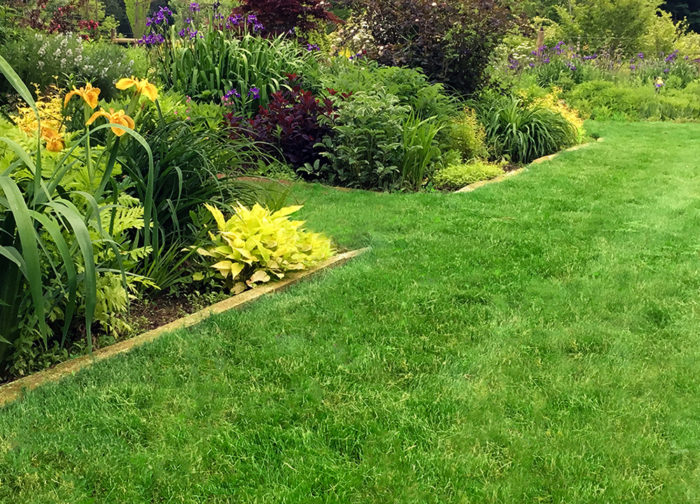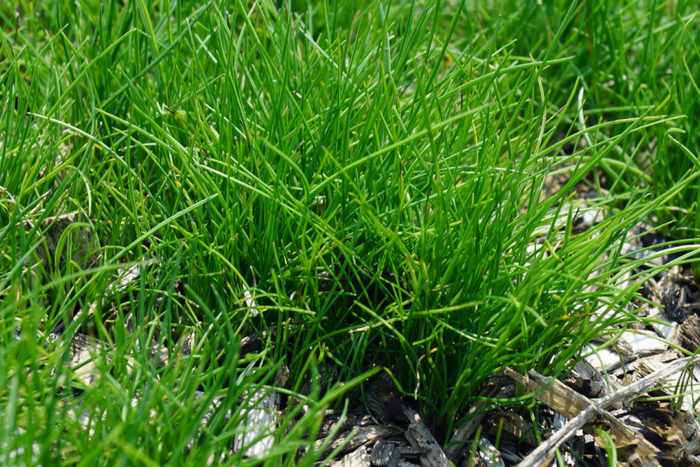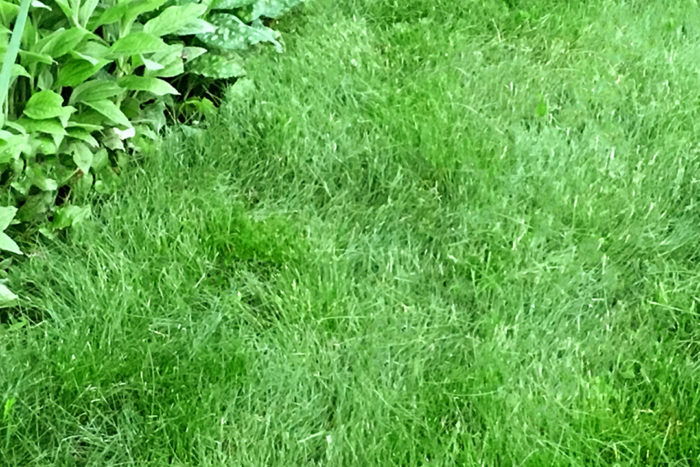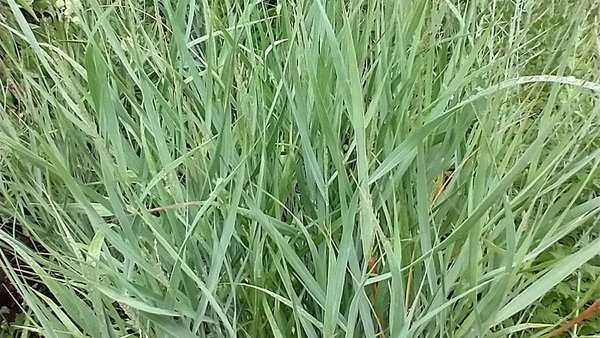
Here in the Mid-Atlantic, we’re in a transition zone where lawn grasses are concerned. Gardens in the northern parts of our region mostly have cool-season grasses, such as Kentucky bluegrass (Poa pratensis, Zones 3–7) and perennial ryegrass (Lolium perenne, Zones 3–8), while gardeners in the hotter, southern parts tend to use warm-season turf grasses, such as Bermuda grass (Cynodon dactylon, Zones 7–10) and zoysia (Zoysia spp. and cvs., Zones 6–10). Cool-season grasses put on most of their growth in spring and fall, while warm-season grasses are most active in summer to early fall. Both kinds need to be mowed often while they’re growing vigorously—generally at least once a week. If you’re tired of spending your weekends behind a lawnmower, the idea of low-mow grass—also called no-mow or eco lawn grass—may sound like a great solution. And it can be, as long as you know what to expect.
Low-mow grass isn’t some cutting-edge new hybrid, genetically engineered to reach 3 inches and then stop growing. Rather, it’s a blend of several kinds of fine-bladed fescues (Festuca spp., Zones 3–9), usually some creeping and some tuft-forming types. The combination of these deep-rooted grasses produces a thick turf that needs little to no water once established and looks good without regular applications of chemical fertilizers, pesticides, herbicides, or fungicides. Fescues are cool-season grasses, so low-mow grass should do well in most parts of our region, except in hot, dry sites in the more southerly areas.

Left uncut, the blades of these fine-textured grasses tend to grow up to about 8 inches and then arch over, creating a flowing or rippled appearance. Then very slender seed heads rise in late spring to about 18 inches. If you go the no-mow route, you can expect your lawn to have the appearance of a low grassy meadow rather than typical turf. The more common low-mow approach is to cut the lawn once in fall and again in late spring, to catch the seed heads as they rise.
If you wish, it is also possible to mow more often, so the low-mow grass looks more like a conventional lawn. If you do this, it is best to set your mower deck at a height of around 4 inches rather than the more usual 3 inches. Closer cutting can weaken some of the fescues and make it easier for weeds to get in, so in most cases, low-mow is not a good choice for a typical suburban front lawn, where people expect to see short, neatly clipped turf. It’s also not ideal for play areas, as heavy or frequent foot traffic can damage the grasses.

Low-mow grasses really shine in areas where you’d like an expanse of green without frequent maintenance. More like a fine-textured ground cover than a lawn, low-mow grass is very useful as a transition between clipped turf and “wild” areas. Its shade tolerance makes it an excellent choice for planting around the base of trees, where it reduces the need for frequent mowing around surface roots and trimming around trunks. In my own garden, I used low-mow blends from Prairie Moon (Eco-Grass) and Prairie Nursery (No Mow) to replace my bark mulch paths, and both worked equally well. If you are looking to spend more time enjoying your garden and less time tending to your turf, low-mow may be a good choice for you too!
—Nancy J. Ondra is the author of over fifteen books, including Grasses, The Perennial Care Manual, and The Perennial Matchmaker.


















Comments
Log in or create an account to post a comment.
Sign up Log in